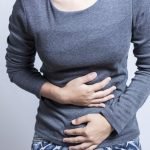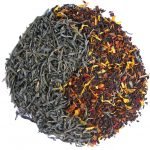Environmental Links to Breast Cancer and Endometriosis
Marianne Marchese, ND
Over the years, there has been a steady rise in women’s health conditions such as breast cancer and endometriosis. Some say the increase is owing to better screening and testing. This may be partially true; however, during this past half century, the use of man-made chemicals in our environment has also increased. Most of the chemicals developed in the United States have not been tested to determine if they can harm human health. Investigations show that human exposure to chemicals in our environment can cause endocrine-disrupting conditions in women.
Synthetic chemicals can disturb the normal activity of estrogens, androgens, and other hormones in a woman.1 They do so by binding directly to hormone receptors, activating the hormone, and causing a chain of events as if the hormone itself was binding to the receptor.1-3 The toxic chemical may also bind and occupy the receptor, blocking normal hormonal activity, or it may interfere with proteins that regulate the activity of hormones.1-5 These effects may be associated with the development of breast cancer and endometriosis in women.
Breast Cancer
Cancer is a multifactorial process. Genetic, immune, and environmental factors have a role. Part of the process leading to cancer is damage to genes that regulate normal cell growth. This damage can be caused in part by exposure to chemicals in the environment and in part by other factors. Many chemicals have a proven link to breast cancer, but a few of the key toxins are the following:
Polyaromatic Hydrocarbons. Polyaromatic hydrocarbons are products of combustion found in automobile exhaust, air pollution, tobacco smoke, and charbroiled meats. High risk of breast cancer is associated with exposure to this known carcinogen. The Long Island Breast Cancer Study Project reported a 48% higher risk of breast cancer in women younger than 65 years who had polyaromatic hydrocarbon–induced DNA damage in their blood than in women without polyaromatic hydrocarbon–induced DNA damage.6
Alcohol. Alcohol and breast cancer represent an area of great controversy. The Program on Breast Cancer and Environmental Risk Factors at Cornell University, Ithaca, New York, evaluated this issue in 1998 and released a fact sheet (http://envirocancer.cornell.edu/factsheet/diet/fs13.alcohol.cfm). Researchers there established that consumption of 2 to 5 alcoholic beverages per day is associated with a breast cancer rate that is 42% higher than that in nondrinkers. The mechanism is thought to be that alcohol increases the level of estrogen in a woman’s body.
Dioxins. Dioxins are formed by incineration and pollute the air and waterways, contaminate feed and crops, and eventually work their way into the food chain. Dioxins are a known cancer-causing agent according to the US Environmental Protection Agency. Researchers have just begun to make the link between breast cancer and dioxins. Women who worked at a chemical plant in Italy were exposed to dioxins during an explosion in 1976 and while working at the plant.7 Blood samples obtained from the women showed that those with high blood levels of dioxins had twice the risk of breast cancer.
Bisphenol A. Bisphenol A (BPA) is a chemical found in hard plastic bottles, the lining of some metal food cans, and some dental sealants. It was originally developed as a synthetic estrogen before it was approved for use by the plastics industry. Bisphenol A is an area of controversy, as some states are banning products that contain BPA, while the industry and Food and Drug Administration continue to state that it is safe. Laboratory investigations using human breast cancer cells showed that BPA stimulates breast cancer cell growth in a manner similar to that of human estrogen.8
Pesticides. Today, most people use pesticides around their home to kill insects, bugs, fleas, and rodents. Herbicides are applied to lawns, golf courses, and parks to kill weeds. Insecticides are applied to pets to kill fleas. The agricultural industry uses the most pesticides in its crop spraying, which can create pesticidal residue on produce that is sold to consumers.
A 2007 study9 measured blood levels of chlorophenothane (DDT) in women when they were younger and then tracked them over the next 20 to 25 years. The investigators recorded if women younger than age 50 years were diagnosed as having breast cancer or died of breast cancer. The researchers concluded that exposure to DDT before age 14 years was associated with a 5-fold increase in the risk of breast cancer before age 50 years. What makes this study notable is that many women who were exposed to DDT during adolescence in the early 1970s have yet to reach age 50 years. Does this mean that we will see an increase in breast cancer in the next few years?
Another study10 evaluated 41 women undergoing breast biopsy for a mass in their breast and measured the level of pesticides in the breast tissue. Twenty of the women had breast cancer, 17 had benign disease, and the others had dysplasia. The levels of DDT were higher in the women with breast cancer than in those with benign disease. What was more notable was that women with estrogen receptor–positive breast cancer had higher pesticide levels in their tissue samples than those with estrogen receptor–negative breast cancer and those without breast cancer.
Heterocyclic Amines. Heterocyclic amines are formed from cooking meat at high temperatures. Any muscle meat from a cow, pig, chicken, turkey, or fish can produce these cancer-causing compounds when cooked at high temperatures. Women who ate well-done meat had a 4.6-fold increase in the risk of breast cancer compared with women who ate rare or medium–done meat.11 The risk was correlated with levels of heterocyclic amines. Numerous animal investigations have also linked heterocyclic amines from cooked meat to breast cancer.11
Phthalates. Phthalates are a group of chemicals added to plastics to make them soft and flexible. Phthalates are known to disrupt women’s reproductive hormones and are often called estrogen mimickers.12 A study13 among young Puerto Rican girls with premature breast development showed that exposure to phthalates in the environment had a role in early breast growth.
Researchers also have determined that phthalates can interfere with the positive effects of tamoxifen citrate.14 This drug is often given to women with breast cancer to increase their chance for survival and to decrease recurrence.
Endometriosis
Endometriosis is a hormonally responsive condition. Endometriosis lesions contain estrogen, progesterone, and androgen receptors. Many theories exist as to what causes endometriosis, and it is likely a combination of many factors. Environmental causes must be considered because endometriosis is a sex steroid–responsive disease. Environmental exposures that affect a woman’s hormonal system need to be addressed.
Dioxin and Polychlorinated Biphenyls. Dioxin and polychlorinated biphenyls (PCBs) are organochlorine compounds that contaminate food and water. Deep endometriotic nodules in women with endometriosis are associated with high blood levels of dioxin and PCBs.15
Phthalates. A 2003 study16 showed that 55 women who had endometriosis had high blood levels of phthalates compared with women who did not have endometriosis. A study17 published in the British Journal of Obstetrics and Gynecology in 2006 looked at 49 women in India who were infertile because of endometriosis and compared them with 38 women who were infertile owing to some other cause such as pelvic inflammatory disease or fibroids and found that the women with endometriosis had higher blood levels of phthalates than the women without endometriosis.
Bisphenol A. A study18 comparing women having endometriosis with healthy women found that more than 63% of the women with endometriosis had BPA in their blood and that none of the healthy women had BPA in their blood. Of course, this study shows only a correlation and not a causative effect between BPA and endometriosis, but women with endometriosis should consider this source of exposure given the fact that BPA is a known hormone-disrupting chemical and is found in many consumer products.
Pesticides and Insecticides. Pesticides and insecticides have been shown to be directly estrogenic or to have estrogenic contaminants and could affect the growth of endometriosis implants.19 Examples include endosulfan, methoxychlor, toxaphene, dieldrin, kepone, lindane, and DDT.
Formaldehyde and Solvents. Formaldehyde and solvents are chemicals present in furniture, wood, carpet, upholstery, dry cleaning, cleaners, and many other products. A study20 looked at high-level exposure such as that among women working in the wood-making industry or among laboratory workers and found a direct correlation with the occurrence of endometriosis.
Cadmium. Using data from the National Health and Nutrition Examination Survey, researchers found that women with endometriosis had higher blood levels of cadmium than women without endometriosis.21
Summary
When evaluating a patient with breast cancer or endometriosis, there are many factors to consider, including chemicals that women are exposed to through air, food, water, and plastics. Evaluation begins with an in-depth exposure history. Testing can provide valuable information on recent exposure, as well as retention of chemicals in the body from past exposures. Testing for heavy metals, pesticides, solvents, phthalates, and other compounds is available from various laboratories. After completing a liver detoxification plan, it is important to prevent reexposure to these chemicals by educating women on how to avoid toxins in their everyday life.
You can find out more about the environmental links to women’s health conditions, including testing and treatment, in my book 8 Weeks to Women’s Wellness: The Detoxification Plan for Breast Cancer, Endometriosis, Infertility, and Other Women’s Health Issues. Learn more at http://drmarchese.com/.
 Marianne Marchese, ND, is the author of 8 Weeks to Women’s Wellness: The Detoxification Plan for Breast Cancer, Endometriosis, Infertility, and Other Women’s Health Issues. She maintains a private practice in Phoenix, AZ, and is a professor of gynecology at SCNM. She writes a column on environmental medicine in Townsend Letter: The Examiner of Alternative Medicine and was named in Phoenix Magazine’s 2010 Best Doctors issue as one of the top NDs. Learn more at http://www.drmarchese.com.
Marianne Marchese, ND, is the author of 8 Weeks to Women’s Wellness: The Detoxification Plan for Breast Cancer, Endometriosis, Infertility, and Other Women’s Health Issues. She maintains a private practice in Phoenix, AZ, and is a professor of gynecology at SCNM. She writes a column on environmental medicine in Townsend Letter: The Examiner of Alternative Medicine and was named in Phoenix Magazine’s 2010 Best Doctors issue as one of the top NDs. Learn more at http://www.drmarchese.com.
References
- Physicians for Social Responsibility. Environmental endocrine disruptors: position statement. 2001. http://www.psr.org. Accessed December 22, 2010.
- Colburn T, Dumanoski D, Myers JP. Our Stolen Future. New York, NY: Penguin Group; 1997:70-86.
- Steingraber S. Living Downstream. Reading, MA: Addison-Wesley; 1997.
- Soto AM, Chung KL, Sonnenschein C. The pesticides endosulfan, toxaphene, and dieldrin have estrogenic effects on human estrogen-sensitive cells. Environ Health Perspect. 1994;102(4):380-383.
- Frigo DE, Burow ME, Mitchell KA, Chiang TC, McLachlan JA. DDT and its metabolites alter gene expression in human uterine cell lines through estrogen receptor–independent mechanisms. Environ Health Perspect. 2002;110(12):1239-1245.
- Gammon MD, Santella RM, Neugut AI, et al. Environmental toxins and breast cancer on Long Island, I: polycyclic aromatic hydrocarbon DNA adducts. Cancer Epidemiol Biomarkers Prev. 2002;11(8):677-685.
- Warner M, Eskenazi B, Mocarelli P, et al. Serum dioxin concentrations and breast cancer risk in the Seveso Women’s Health Study. Environ Health Perspect. 2002;110(7):625-628.
- Welshons WV, Nagel SC, Vom Saal FS. Large effects from small exposures, III: endocrine mechanisms mediating effects of bisphenol A at levels of human exposure. Endocrinology. 2006;147:S56-S69.
- Cohn BA, Wolff MS, Cirillo PM, Sholtz RI. DDT and breast cancer in young women: new data on the significance of age at exposure. Environ Health Perspect. 2007;115(10):1406-1414.
- Dewailly E, Dodin S, Verreault R, et al. High organochlorine body burden in women with estrogen receptor–positive breast cancer. J Natl Cancer Inst. 1994;86(3):232-234.
- Debruin LS, Josephy PD. Perspectives on the chemical etiology of breast cancer. Environ Health Perspect. 2002;110(1):119-127.
- Lovenkamp-Swan T, Davis BJ. Mechanisms of phthalate ester toxicity in the female reproductive system. Environ Health Perspect. 2003;111(2):139-145.
- Colón I, Caro D, Bourdony CJ, Rosario O. Identification of phthalate esters in the serum of young Puerto Rican girls with premature breast development. Environ Health Perspect. 2000;108(9):895-900.
- Kim IY, Han SY, Moon A. Phthalates inhibit tamoxifen-induced apoptosis in MCF-7 human breast cancer cells. J Toxicol Environ Health. 2004;67:2025-2035.
- Heilier JF, Donnez J, Lison D. Organochlorines and endometriosis: a mini-review. Chemosphere. 2008;71(2):203-210.
- Cobellis L, Latini G, De Felice C, et al. High plasma concentrations of di-(2-ethylhexyl)-phthalate in women with endometriosis. Hum Reprod. 2003;18(7):1512-1515.
- Reddy BS, Rozati R, Reddy BV, Raman NV. Association of phthalate esters with endometriosis in Indian women. BJOG. 2006;113(5):515-520.
- Cobellis L, Colacurci N, Trabucco E, Carpentiero C, Grumetto L. Measurement of bisphenol A and bisphenol B levels in human blood sera from healthy and endometriotic women. Biomed Chromatogr. 2009;23(11):1186-1190.
- Foster WG, Agarwal SK. Environmental contaminants and dietary factors in endometriosis. Ann N Y Acad Sci. 2002;955:213-229.
- Taskinen HK, Kyyrönen P, Sallmén M, et al. Reduced fertility among female wood workers exposed to formaldehyde. Am J Ind Med. 1999;36(1):206-212.
- Jackson LW, Zullo MD, Goldberg JM. The association between heavy metals, endometriosis and uterine myomas among premenopausal women: National Health and Nutrition Examination Survey 1999-2002. Hum Reprod. 2008;23(3):679-687.










